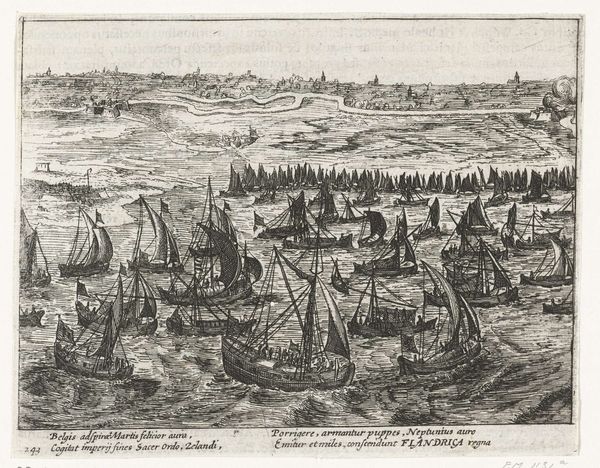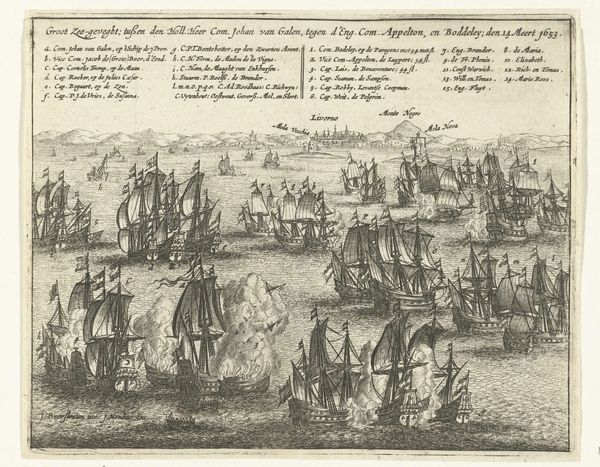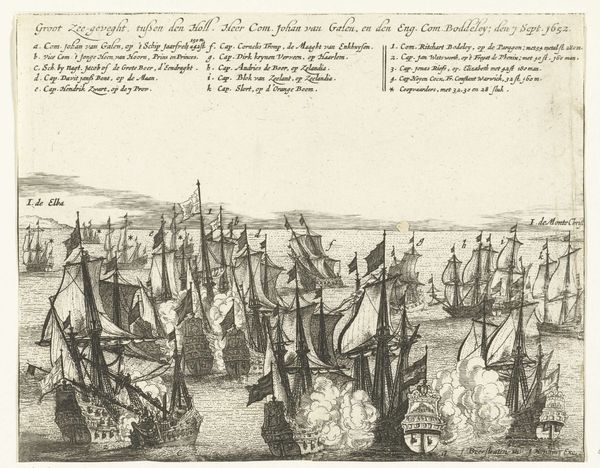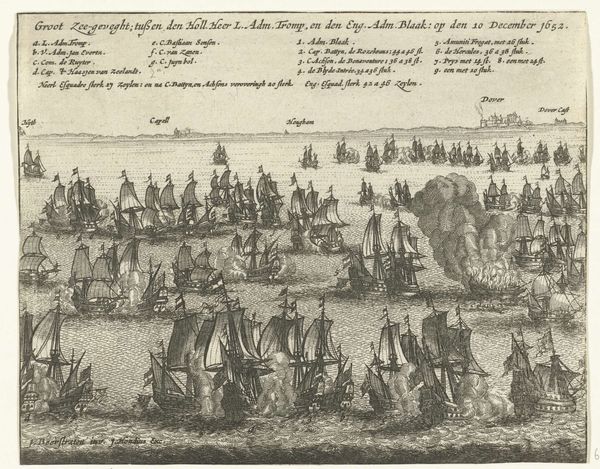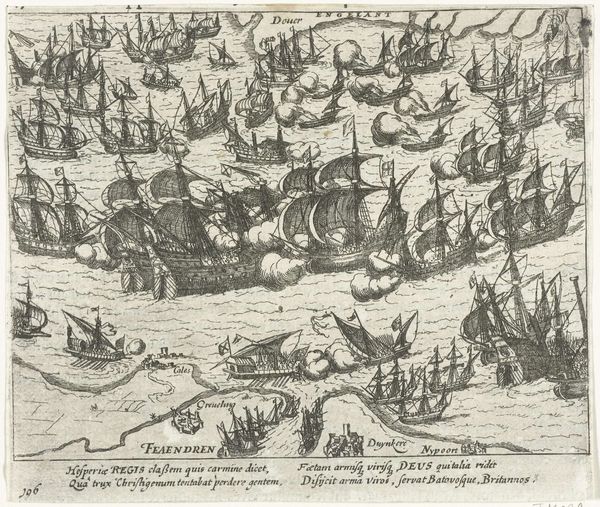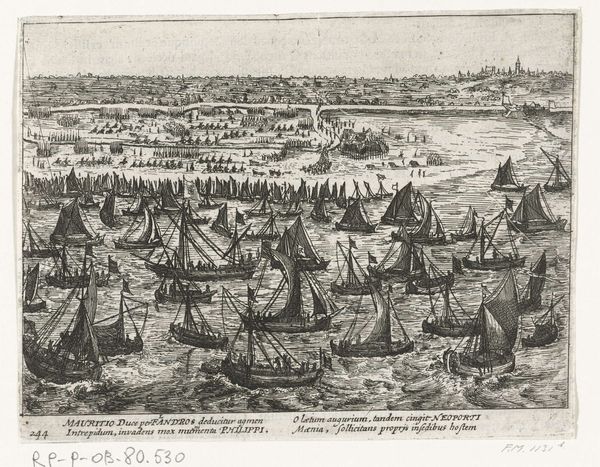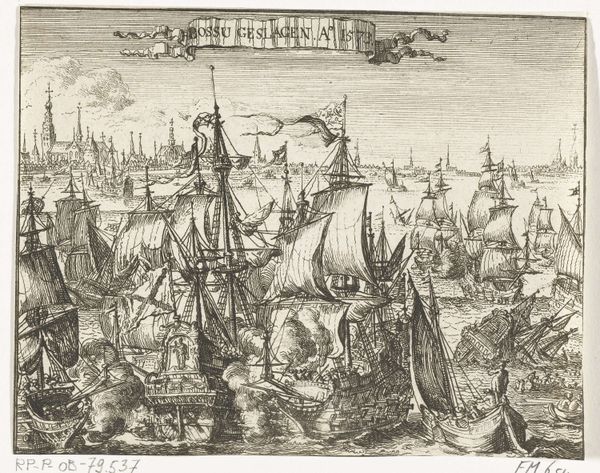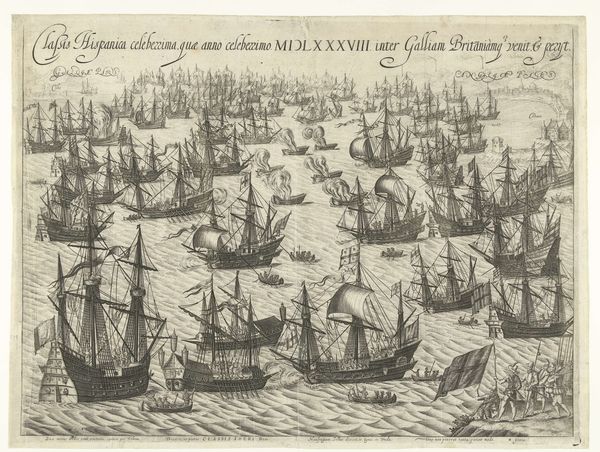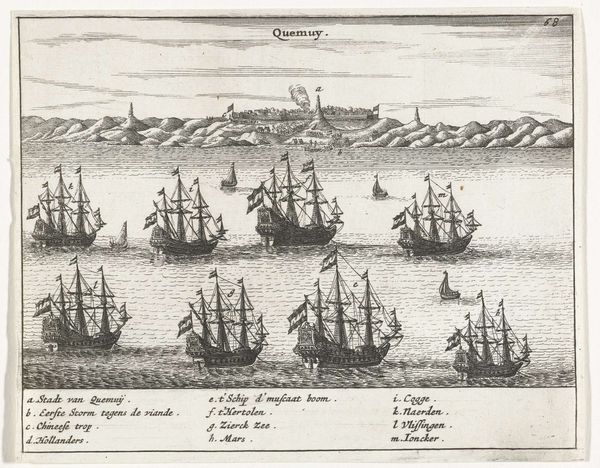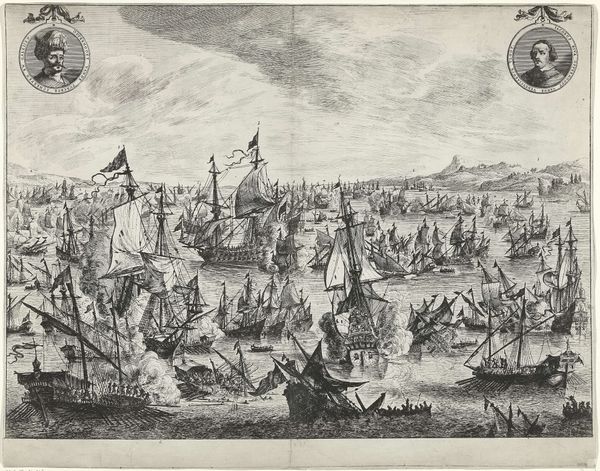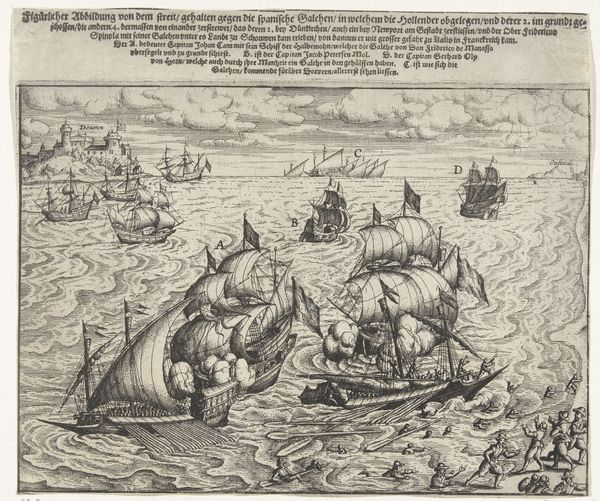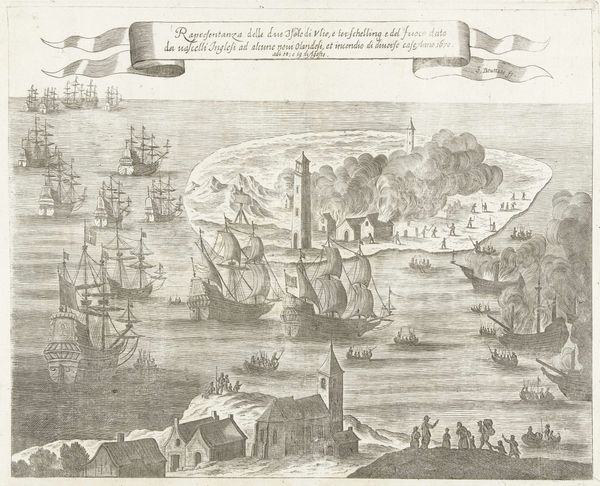
Zeeslag bij Plymouth tussen de Staatse vloot onder De Ruyter en de Engelse vloot onder Ayscue, 1652 1654 - 1656
0:00
0:00
print, engraving
#
narrative-art
#
dutch-golden-age
# print
#
pen illustration
#
landscape
#
figuration
#
pen-ink sketch
#
line
#
pen work
#
sketchbook drawing
#
history-painting
#
engraving
Dimensions: height 135 mm, width 169 mm
Copyright: Rijks Museum: Open Domain
Editor: This print, "Zeeslag bij Plymouth tussen de Staatse vloot onder De Ruyter en de Engelse vloot onder Ayscue, 1652", from 1654-1656, depicts a naval battle, showcasing incredibly detailed ships and smoky chaos despite its relatively small scale. It’s quite busy, almost overwhelming. What stories do you think this piece is trying to tell us through its imagery? Curator: It tells us of cultural memory. Notice how the artist painstakingly renders each ship. These aren’t just vessels; they're symbols of national pride and naval power, crucial for trade routes and projecting authority. Consider the smoke—a visual shorthand for conflict, but also, a metaphor for the obscuring of truth. What does conflict *hide*, do you think? Editor: That's interesting. Perhaps the personal stories of those involved are hidden, only leaving us with a generalized idea of "battle". Curator: Precisely! And what about the Dutch Golden Age context? These engravings often served as propaganda, solidifying narratives of strength and resilience. The symbols resonate deeply with a culture grappling with its identity and dominance. This image then becomes an embodiment of national aspirations and anxieties of the time. Are you seeing those layers? Editor: I think so. The symbols become these little capsules of meaning, almost like a visual language. How do we interpret such images in a contemporary setting, detached from that immediate context? Curator: By understanding the persistent nature of symbols. Naval power may translate to different symbols now - perhaps technology, maybe something else - but the underlying concept of projecting power remains a human constant. These images act as bridges, connecting past cultural anxieties with present ones. Editor: So, decoding the imagery reveals deeper truths about how cultures understand themselves. Fascinating! Curator: Indeed. Visual language shapes, reflects, and transcends time. It has given me a new perspective, too, about how images echo across centuries.
Comments
No comments
Be the first to comment and join the conversation on the ultimate creative platform.
